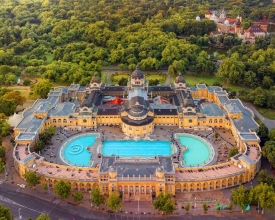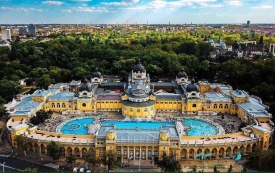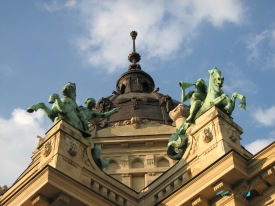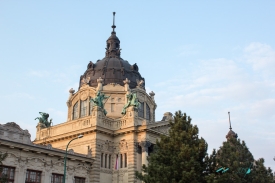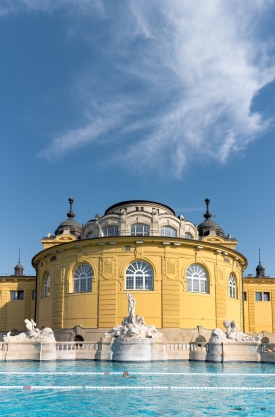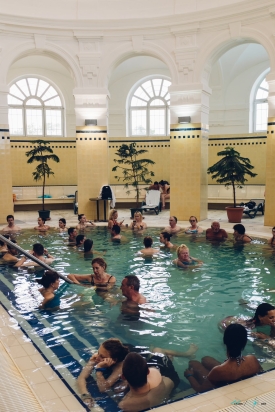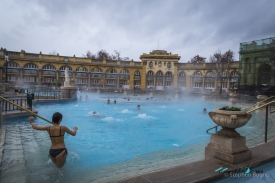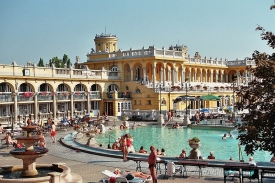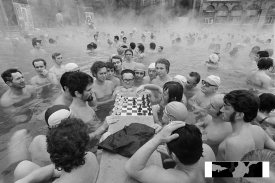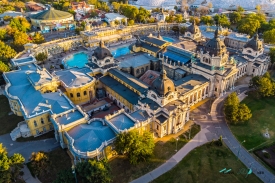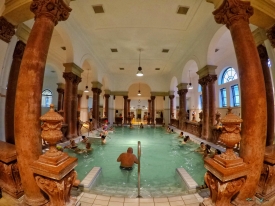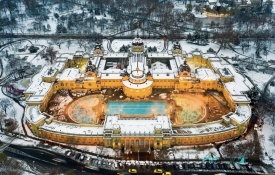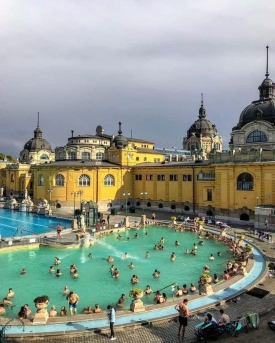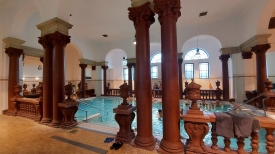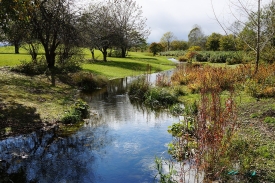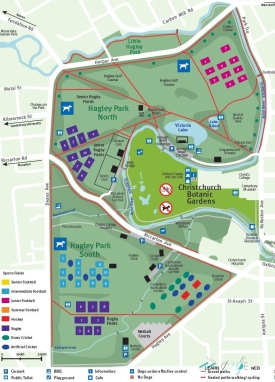ABOUT Széchenyi thermal bath
Széchenyi Thermal Bath is one of the largest and most popular thermal baths in Budapest, Hungary. It was first opened in 1913 and has since become a popular tourist attraction, as well as a favorite spot for locals to relax and socialize.
The bath complex features 18 pools, including three large outdoor pools, and a variety of indoor pools, saunas, steam rooms, and other wellness facilities. The water in the pools is sourced from natural hot springs, with temperatures ranging from 28 to 40 degrees Celsius (82 to 104 degrees Fahrenheit).
One of the most notable features of Széchenyi Thermal Bath is its beautiful neo-baroque architecture, with stunning yellow and white facades and intricate details throughout the building. The bath complex also features a range of services, including massage and other treatments, as well as a restaurant and bar.
Visitors to Széchenyi Thermal Bath can purchase a range of tickets, from basic entry to full-day passes with access to all pools and wellness facilities. It's important to note that the complex can get quite crowded, especially during peak tourist season, so visitors are advised to arrive early or book tickets in advance.
Overall, Széchenyi Thermal Bath is a must-visit destination for anyone traveling to Budapest, offering a unique and relaxing experience that's sure to leave visitors feeling refreshed and rejuvenated.
Széchenyi Thermal Bath was first established in the early 20th century, during the period when Budapest was rapidly expanding and becoming a major European city. The idea for the bath came from Vilmos Zsigmond, a Budapest-based mining engineer who was interested in developing a complex that could make use of the city's natural hot springs.
Construction of the complex began in 1909 and was completed in 1913. The design was led by Gyozo Czigler, a prominent Hungarian architect, who created a stunning neo-baroque building with a symmetrical layout and intricate details throughout.
During World War II, the bath suffered significant damage, but it was rebuilt and reopened in the 1950s. In the following decades, it became a popular destination for tourists and locals alike, with regular upgrades and renovations to improve its facilities and amenities.
Today, Széchenyi Thermal Bath remains one of Budapest's most beloved attractions, with visitors from around the world coming to relax in its pools and enjoy its beautiful architecture. In recent years, the bath has also become a popular venue for events, including music festivals, fashion shows, and film screenings.
Daily ticket with locker usage Weekdays and Afternoon ticket (from 5 pm) (Monday-Thursday) USD$25.00
Daily ticket with locker usage Weekdays and Afternoon ticket (from 6 pm) (Fridays, weekends
and holidays) USD$30.00
The bath complex features 18 pools, including three large outdoor pools, and a variety of indoor pools, saunas, steam rooms, and other wellness facilities. The water in the pools is sourced from natural hot springs, with temperatures ranging from 28 to 40 degrees Celsius (82 to 104 degrees Fahrenheit).
One of the most notable features of Széchenyi Thermal Bath is its beautiful neo-baroque architecture, with stunning yellow and white facades and intricate details throughout the building. The bath complex also features a range of services, including massage and other treatments, as well as a restaurant and bar.
Visitors to Széchenyi Thermal Bath can purchase a range of tickets, from basic entry to full-day passes with access to all pools and wellness facilities. It's important to note that the complex can get quite crowded, especially during peak tourist season, so visitors are advised to arrive early or book tickets in advance.
Overall, Széchenyi Thermal Bath is a must-visit destination for anyone traveling to Budapest, offering a unique and relaxing experience that's sure to leave visitors feeling refreshed and rejuvenated.
History
Széchenyi Thermal Bath was first established in the early 20th century, during the period when Budapest was rapidly expanding and becoming a major European city. The idea for the bath came from Vilmos Zsigmond, a Budapest-based mining engineer who was interested in developing a complex that could make use of the city's natural hot springs.
Construction of the complex began in 1909 and was completed in 1913. The design was led by Gyozo Czigler, a prominent Hungarian architect, who created a stunning neo-baroque building with a symmetrical layout and intricate details throughout.
During World War II, the bath suffered significant damage, but it was rebuilt and reopened in the 1950s. In the following decades, it became a popular destination for tourists and locals alike, with regular upgrades and renovations to improve its facilities and amenities.
Today, Széchenyi Thermal Bath remains one of Budapest's most beloved attractions, with visitors from around the world coming to relax in its pools and enjoy its beautiful architecture. In recent years, the bath has also become a popular venue for events, including music festivals, fashion shows, and film screenings.
Rates
Daily ticket with locker usage Weekdays and Afternoon ticket (from 5 pm) (Monday-Thursday) USD$25.00
Daily ticket with locker usage Weekdays and Afternoon ticket (from 6 pm) (Fridays, weekends
and holidays) USD$30.00
The Best Pictures of Széchenyi thermal bath
Videos of Széchenyi thermal bath








![Guide des THERMES de BUDAPEST || Széchenyi [vlog 53]](https://i1.ytimg.com/vi/nPJ9jb9sHzQ/mqdefault.jpg)




